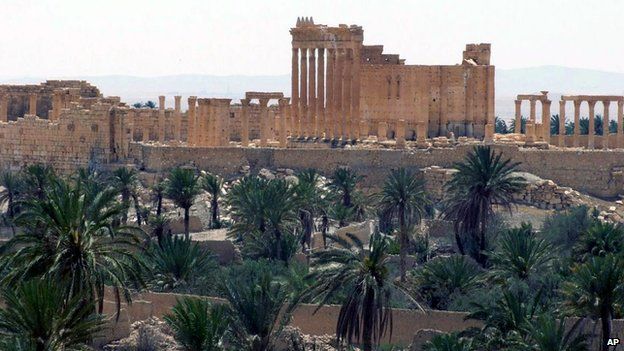I tell ya, every single day the cosmos reminds me that I don't know a damn thing. It is alarming that they let me teach, given my ignorance!
The certified idiot that I am, my immediate thought was this: is this town Palmyra the origin of the tree palmyra that was all around in my part of the old country? What if the spellings look the same, but the pronunciations are different?
I tell ya, every single day I keep asking the cosmos questions and it couldn't care whether I even existed. The cosmos simply is. Whether I want to understand, ask questions, or ignore them all, is really my call. I choose against ignoring the questions that pop up, even if the questions are seemingly inane, like whether the advertising "mad men" pressure women into removing their armpit and leg hair!
So ... palmyra. The tree, that is. In case you never knew about the tree, first, let me tell you what Wikipedia has to say about this tree and my old country:
The Palmyra tree is the official tree of Tamil Nadu. In Tamil culture it is called karpaha,"Nungu" "celestial tree"You see why the news about IS taking over Palmyra made me think about the tree in the old country? ;)
 |
| source |
The "nungu" was very much a part of the growing up experience, though I way preferred the tender coconut water and the pulp over this. But, I did like the jelly-like nongu:
The coconut-like fruits are three-sided when young, becoming rounded or more or less oval, 12-15 cm wide, and capped at the base with overlapping sepals. The outer covering is smooth, thin, leathery, and brown, turning nearly black after harvest. Inside is a juicy mass of long, tough, coarse, white fibers coated with yellow or orange pulp. Within the mature seed is a solid white kernel which resembles coconut meat but is much harder. When the fruit is very young, this kernel is hollow, soft as jelly, and translucent like ice, and is accompanied by a watery liquid, sweetish and potable.How does it look like? Like so:
 |
| source |
In this first-person narrative that I came across as I read up about the palmyra in the old country, the author wonders if the tree was native to the Subcontinent, given its long historical record:
I started the search from the other end, Africa. Palmyra grows all across that continent's savannas. It truly seemed at home there, surrounded by giraffes, zebras, elephants and other animals. The only creatures I've seen ambling around these palms here are cows and goats. Then it hit me. I was looking at Borassus aethiopum, and one of its other names was Borassus flabellifer. The World Agroforestry Centre suggests that the African species may have been domesticated and became the Indian palmyra. Years of selective breeding may have created a new species, just as domesticated wolves became dogs.
Excited by this discovery, I emailed another friend Rohan Pethiyagoda who shares my interest in history. Within hours, he sent me a scientific paper that showed our palmyra was a distinct species in its own right, even though it looks almost identical to aethiopum. The former ranges across the Indian subcontinent and into the Malayan peninsula, while the latter is strictly African. But that doesn't resolve the question of palmyra's origin. Prehistoric trade could have dispersed a domesticated species far and wide, especially if it had many uses. Rohan says a genetic study currently underway will resolve the ambiguity.
That was from three years ago. Maybe since then science has provided a definitive answer. But, I don't care; I am content with the notion that the palmyra, like me, has its origins in Africa. If the militants keep up with their maniacal destruction of the heritage sites, of which Palmyra is one, it will make it that much more difficult for us to trace our story back to Africa :(

4 comments:
Don't like nongu .
Who cares about Borassus aethiopum vs Borassus flabellifer.
Looks like an eggplant with ice inside. The description of the interior - long tough fibers - does not sound appealing. I wonder who looked at it and said, "I wonder what it tastes like. Let's eat it." Brave soul.
Ramesh not liking nongu does not surprise me at all--the guy will be happy to simply pop in a food-pill and not even bother with foods, and instead watch sports on TV all day long! ;)
I often wonder that way, Anne. It was plenty of bad experiments that went wrong, I am sure, thanks to that curiosity. But then thanks to those adventurous folks, here we are, right? In the old country, there is a day set aside to remember the ancestors--a profound notion that we so conveniently forget :(
(more on that here: sriramkhe.blogspot.com/2011/09/remember-ancestors-reward-in-few-days.html)
Re: removing armpit and leg hair. I don't know if admen are responsible, but there could be some blame there. After all, they are the ones who convinced us we need to drink our tap water out of plastic bottle for which we paid 1000X its worth.
I do know that deodorant is more effective on hairless armpits and leg hair looks awful under pantyhose. Perhaps the rising of hemlines begat the shaven legs.
Post a Comment